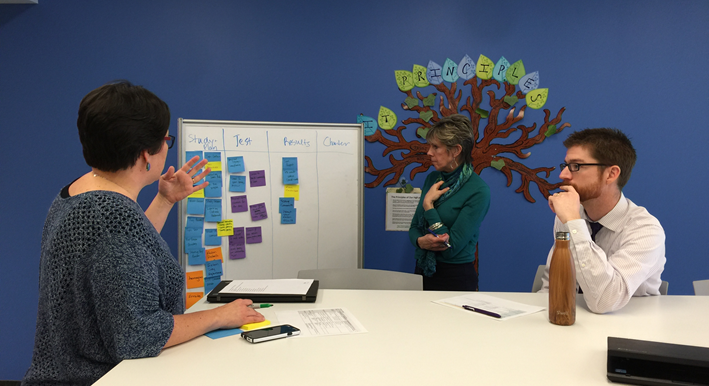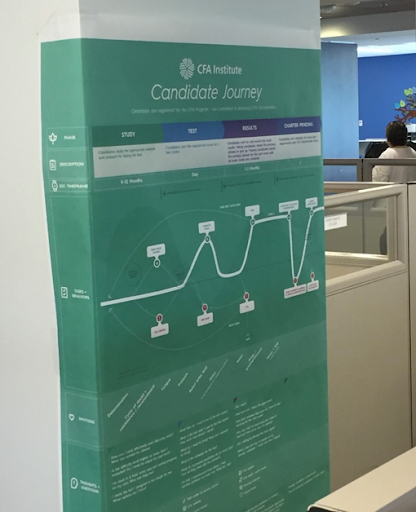
Are you getting ready to build a new website or significantly redesign an existing one? If so, one of the biggest challenges will be defining the site map, taxonomy, and navigation—key elements of information architecture (IA).
To make sure you develop effective information architecture and get the buy-in you need to deploy it, it is essential that you involve stakeholders early and often. So, how do you go about involving stakeholders and get them to buy into a new approach? You will need participation, evidence, and authority. Here are ways to achieve each of these.
Getting Stakeholder Participation
Why is it important to have stakeholders participate in the development of IA? Here are just a handful of reasons it works:
- Stakeholders feel heard and involved.
- Stakeholders realize defining IA isn’t easy and practice collaborating on it.
- Stakeholders inform the priorities and messages to communicate.
- Stakeholder perspective can balance executive perspective.
- Stakeholder perspective can inform hypotheses about the best IA.
There are lots of ways to get stakeholders involved. Many of the activities for user research and testing of IA can be adapted for stakeholder participation.
- Card Sorting and Tree testing: Make collaborative (work in groups) for larger numbers of stakeholders.
- Usability Testing: Use stakeholders as trial runs.
- Vision and Concepting: Have stakeholders describe or sketch the desired future state.
- User Journeys: Have stakeholders collaborate on defining and identifying IA opportunities.
- Governance: Collaborate to set IA guidance principles.
Card sorting and user journey projects are great opportunities to bring together stakeholders for brainstorming sessions. When the Content Science team was working with the CFA Institute to create new user journeys, we hosted several stakeholder collaboration sessions, being sure to get a variety of perspectives on how to help users find content across multiple channels.
Providing Information Architecture Evidence
You can work for months to get your IA right, but if you can’t get stakeholder buy-in, all of that work could be for nothing. Backing up your IA proposal with evidence will help stakeholders get on board. To get the evidence you need you can conduct analysis, testing, and evaluation to inform your IA decisions.
Doing so will help:
- Bring user perspective and behavior into understanding IA problems and potential solutions.
- Counterbalance internal biases about the current state.
- Validates the impact of changes.
Additionally, using user quotes about opportunities to improve are compelling and reduce risk of relationship conflict.
Evidence is essential in any situation, but especially situations with differing stakeholder, user, and executive perspectives.
An important part of evidence gathering is analysis and ongoing evaluation. You will want to gather evidence to understand the IA problem and to understand the impact of the IA solution. Look into questions such as:
- Are users clicking on the navigation? Are they taking “happy” paths? Completing those paths?
- Do users perceive the content as easy to find?
- Do users perceive suggested / related content as relevant? Do they click on the suggestions?
- Are customers reporting success / goal completion? How is that changing over time?
Tools that help with analysis include:
- Analytics + Quality: Google Analytics, SiteImprove, Adobe Analytics, Channel-specific analytics
- Microengagements + Heatmapping: SiteImprove, CrazyEgg, HotJar, ContentWRX
- Voice of Customer: CWRXE, Survey Tools
Bringing in an Authority
Getting all of your stakeholders on the same page can be a challenge. Especially if you are trying to change existing IA. It can be hard for stakeholders to let go of how things have always been. That’s when it helps to bring in outside perspective. Relying on an authoritative person, third party, and / or best practice for direction or a decision can give stakeholders confidence in the new way of doing things.
Here’s why this works:
- Best practices (e.g. 4-7 “buckets”) are often grounded in evidence.
- A third party offers a credible perspective and relevant examples.
- A third party can offer criticism without risking long-term internal relationships.
- Executive authorities can accelerate adoption of IA decisions grounded
in evidence and participation.
Leaning on an authority is particularly helpful for organizations with hierarchical culture, long term in-house relationships, and / or need to accelerate change.
Here’s an example. The Content Science team recently worked with a healthcare company on its new brand and IA. Content Science served as a third-party content authority to help:
- Facilitate consensus on applying brand direction to the content and IA
- Fleshing out voice and message architecture
- Define updated IA to reflect new voice and to meet diverse users needs
In the process, we showed examples from our diverse experience and highlighted best practices to consider.
Bottom Line
Achieving stakeholder buy-in isn’t easy. But it is worthwhile. When you get the right people fully on board, you will end up with better IA and strong support for implementing the IA. By involving stakeholders every step along the way you can get necessary feedback before it’s too late and ensure you have alignment on decisions. And because it often takes more than stakeholder participation to get buy-in, be sure to have an analysis plan to bring evidence to the table and lean on an authority if you need extra assistance.
Events, Resources, + More
New Data: Content Ops + AI
Get the latest report from the world's largest study of content operations. Benchmarks, success factors, commentary, + more!
The Ultimate Guide to End-to-End Content
Discover why + how an end-to-end approach is critical in the age of AI with this comprehensive white paper.
The Content Advantage Book
The much-anticipated third edition of the highly rated book by Colleen Jones is available at book retailers worldwide. Learn more!
20 Signs of a Content Problem in a High-Stakes Initiative
Use this white paper to diagnose the problem so you can achieve the right solution faster.








Comments
We invite you to share your perspective in a constructive way. To comment, please sign in or register. Our moderating team will review all comments and may edit them for clarity. Our team also may delete comments that are off-topic or disrespectful. All postings become the property of
Content Science Review.